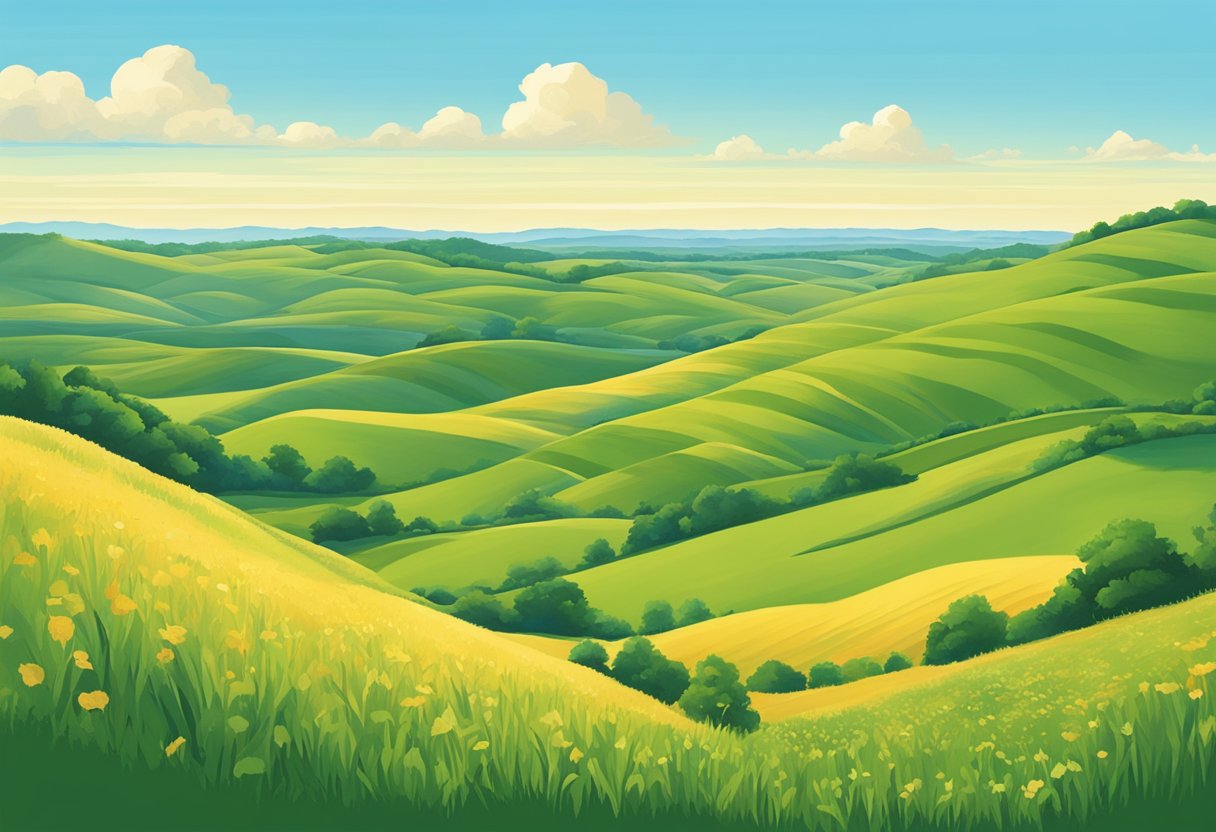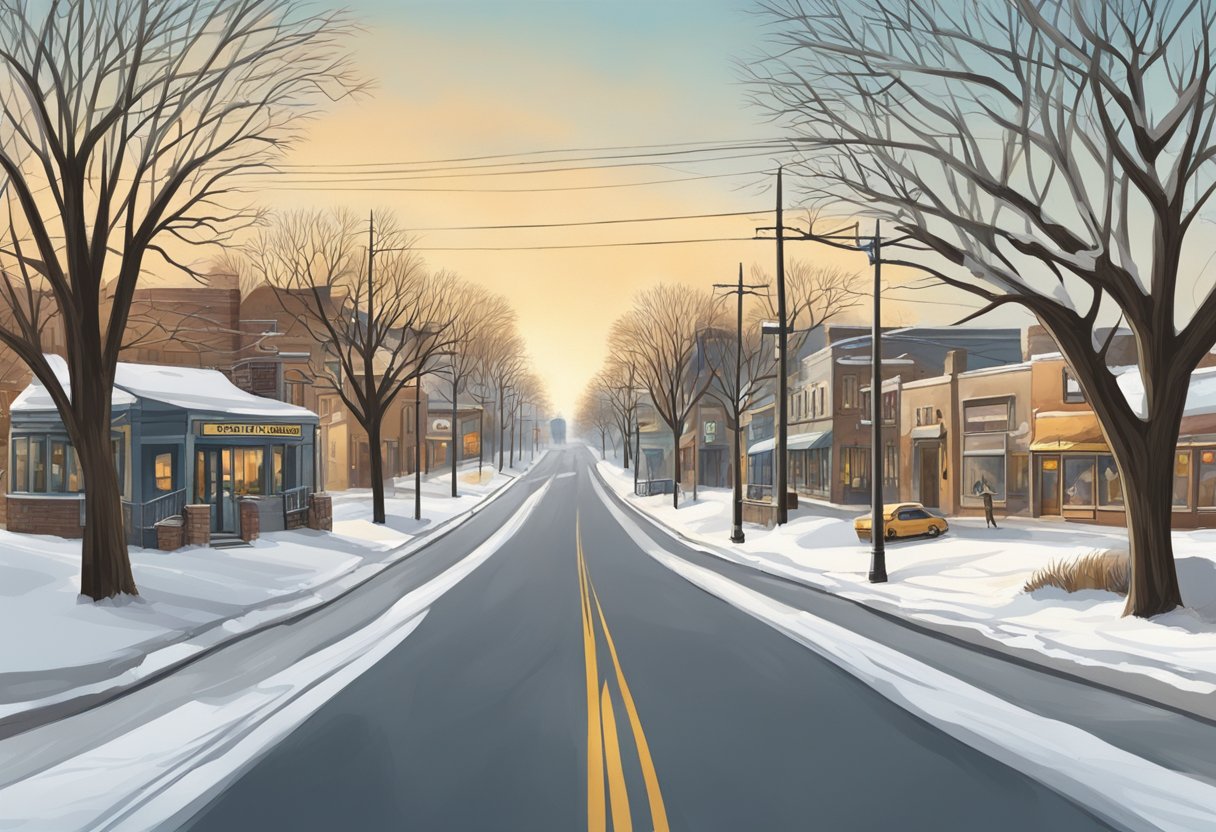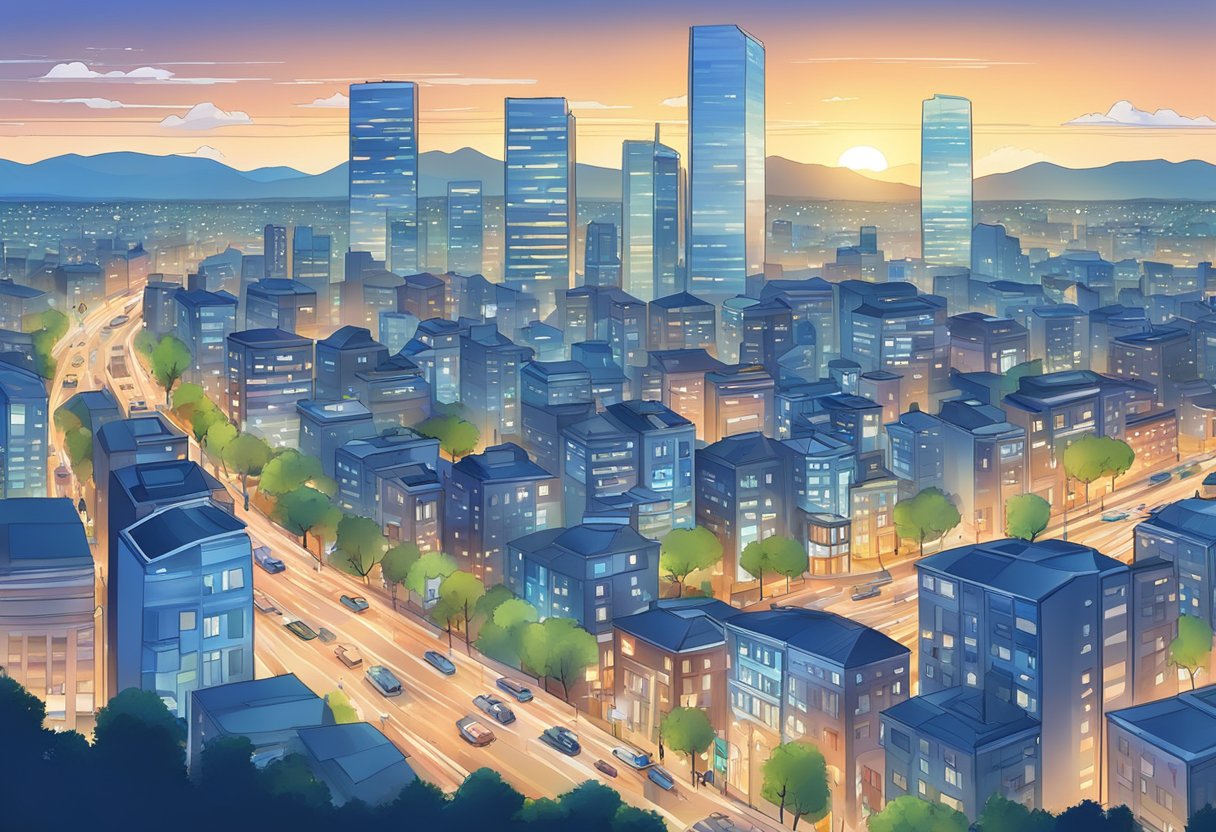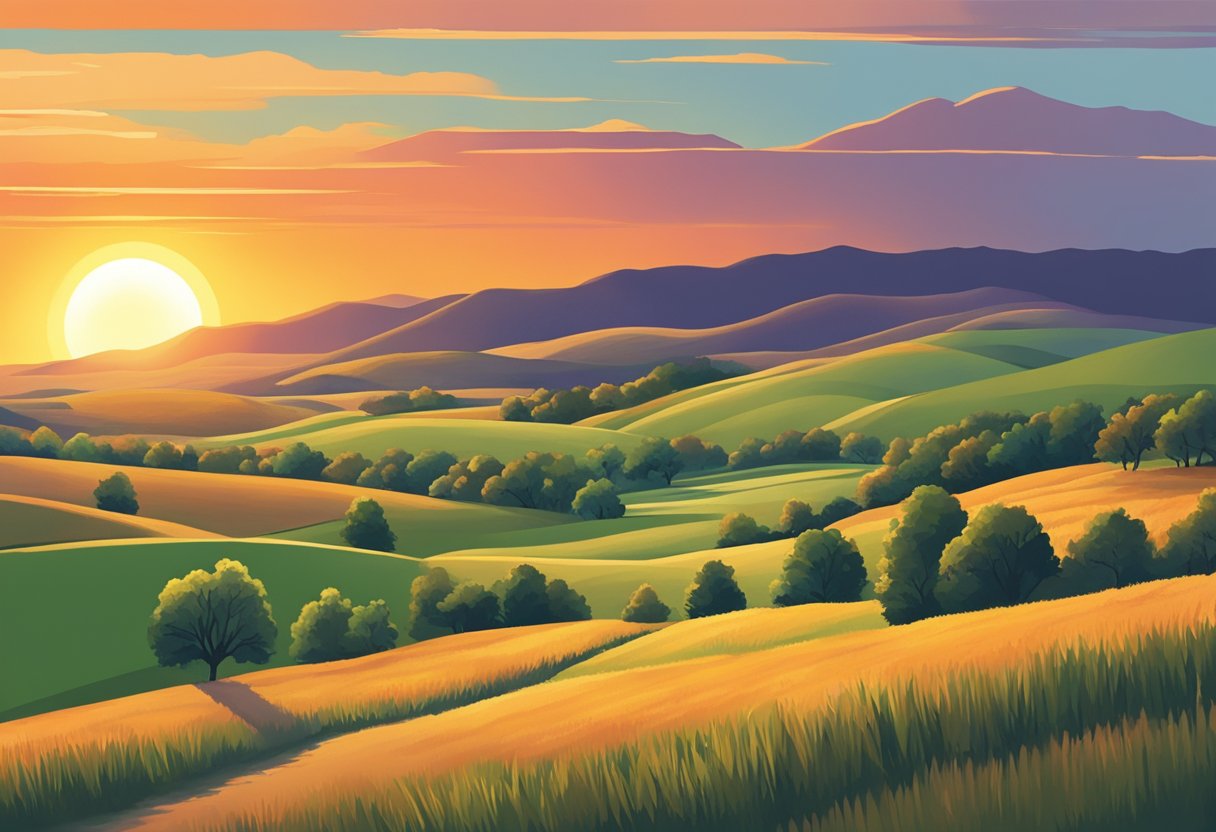
When Is the Best Time to Visit
Visiting Nebraska? You might want to plan your trip for the late spring through early fall. Specifically, May to October is generally the most pleasant time. During these months, you’ll get to enjoy warm weather, lots of sunshine, and plenty of outdoor activities.
- May to June: These months are perfect for witnessing Nebraska’s beautiful wildflower bloom. Plus, the weather is mild, making it great for hiking and picnics.
- July to August: Although it can get quite hot, summertime is when Nebraska really shines with events and festivals. Pack some sunscreen and a hat!
- September to October: The heat starts to give way to cooler temperatures, making it a fantastic time for exploring state parks. The fall colors are also a huge draw during this period.
By visiting in these months, you can avoid the extreme cold and snow that Nebraska experiences in winter. Remember to check local events calendars to catch the best local fairs and gatherings! Keep in mind that hotel rates can fluctuate based on events and peak tourist seasons, so booking in advance can save you some cash.
When Is the Worst Time to Visit Nebraska
If you’re thinking about visiting Nebraska, you probably want to avoid the more challenging weather conditions.
Late Winter to Early Spring
This time is particularly tricky, primarily due to:
- Unpredictable weather: Snow and ice can still be a factor, making travel uncertain.
- Cold temperatures: Though less intense than midwinter, it can still be quite chilly, especially in February and March.
| Month | Issues |
|---|---|
| February | Snowstorms, icy conditions |
| March | Sudden cold snaps |
| April | Rain, occasional snow |
Summer
While summer brings vivid green scenery, consider these:
- Heat and humidity: July and August can get very hot.
| Month | Issues |
|---|---|
| July | Heat waves, high humidity |
| August | Sweltering days |
Late Spring
May might have you itching to get outdoors, but remember:
- Severe weather: Nebraska is in Tornado Alley, so spring may bring storms.
| Month | Issues |
|---|---|
| May | Thunderstorms, tornado risk |
In light of these factors, you might want to plan your trip for more temperate months, avoiding some of the extreme weather patterns Nebraska can experience.
The Cheapest Time to Visit

If you’re looking to save some cash on your trip to Nebraska, consider timing your visit for the off-peak seasons. That’s usually when hotels and attractions offer lower rates due to fewer visitors.
Late Fall to Early Spring:
Mid-November to March is your best bet for snagging travel deals. The cold might nip at your nose, but your wallet will thank you. Just pack warm!
Avoid holidays: Thanksgiving, Christmas, and New Year’s attract visitors, bumping up prices.
Here’s a quick rundown of what you might expect, budget-wise:
- Lodging: Prices can be up to 20-30% cheaper than peak months.
- Flights: Keep an eye on winter sales, as airlines are keen to fill seats.
- Attractions: Some may offer lower entrance fees or free days.
Midweek Stays:
Grab better deals by booking your accommodations from Monday to Thursday.
| Month | Hotel Savings | Flight Deals |
|---|---|---|
| January | High | Moderate |
| February | Moderate | High |
| March | Low | Low |
| November | High | Moderate |
| December (early) | Moderate | Moderate |
Book in advance and watch for discounts. You’ll experience Nebraska without the crowds and with more cash to spare for local steaks or a Cornhuskers game!
Off-Season: Least Busy Time to Visit

If you’re looking to avoid the crowds, the off-season in Nebraska is typically from late fall to early spring – November through March. Tourism slows down during this period due to colder weather, with snow and chilly winds being common.
- November to December: Prepare for cold and potential snowfall.
- January to February: Expect the coldest temperatures.
- March: Signs of spring emerge, but still low on tourists.
During these months, you can enjoy the local culture without the bustle:
- Check out indoor attractions like museums and galleries.
- Cozy up in local cafes and restaurants.
- Take advantage of lower hotel rates and fewer tourists at popular spots.
Here’s a quick look at what you can expect:
| Month | What to Expect |
|---|---|
| November | Early snow, fewer crowds. |
| December | Cold, holiday events with fewer people. |
| January | The peak of winter, very low tourism. |
| February | Still cold, but slightly more visitors. |
| March | Warmer, snow starts to melt, tranquil. |
The weather might be brisk, but with the right layers, you can comfortably explore. And since it’s quieter, you have a good chance of finding better deals. Just remember to check the local weather and road conditions before your trip.
The Most Expensive Time to Visit

When you’re planning a trip to Nebraska, you’ll want to watch out for the summer months, especially from June to August. Why? Well, that’s when prices for hotels and attractions tend to hit their peak. Let’s break down the main reasons your wallet might feel lighter if you choose to visit during this period:
- Accommodation Costs: Rooms can be pricier because that’s when most folks are traveling. It’s just a simple case of high demand and not enough supply.
- Airfare Prices: Flights also take a leap upward. Since kids are out of school, families are looking to get away, which means you’re competing for seats with a lot of eager vacationers.
Here’s a quick glance at what you might expect to pay during the high season:
| Travel Expense | Off-Peak Season | Peak Season (Jun-Aug) |
|---|---|---|
| Hotel Room (Per Night) | $75 – $125 | $150 – $250 |
| Flight (Round Trip) | $350 – $500 | $550 – $800 |
| Car Rental (Per Day) | $40 – $60 | $70 – $100 |
Keep in mind that popular events, like the College World Series in Omaha, can cause prices to go through the roof due to the influx of fans. So if you’re not one for crowds or paying top dollar, you might want to dodge those dates.
You probably guessed it: this surge in expenses means you’ve got to be savvy with your budget if your heart’s set on a summer Nebraska adventure. Booking well in advance or catching last-minute deals can sometimes save you a bit of cash, but you’ll still be dealing with the season’s premium rates.
Hottest Months
When planning your trip to Nebraska, keep in mind that the summer can get quite toasty. July is typically the hottest month, with average highs soaring to about 89°F (32°C). But the heat doesn’t just start and end in July. Here’s a quick look at the averages:
| Month | Average High | Average Low |
|---|---|---|
| June | 85°F (29°C) | 60°F (15°C) |
| July | 89°F (32°C) | 65°F (18°C) |
| August | 87°F (31°C) | 63°F (17°C) |
Don’t forget that these numbers are averages, and it can get even hotter on certain days. The humidity can make it feel even warmer, so light clothing and hydration are key. If you’re not a fan of heat, consider planning your visit for the spring or fall. But if you’re someone who loves soaking up the sun, summer is your golden time to hit the Nebraska outdoors. Just be ready for it, and always have a bottle of water handy!
Coldest Months
If you’re planning a visit to Nebraska and want to stay warm, you might want to avoid December to February. During these months, temperatures drop significantly, often bringing snow and brisk winds.
December through February: Nebraska’s winter season is characterized by cold weather conditions. Average high temperatures can hover around 32°F (0°C), but often dip below freezing.
Average Snowfall:
- December: You can expect around 5.9 inches of snow.
- January: The snowfall typically increases to around 6.5 inches.
- February: Things start to lighten up with an average of 4.7 inches of snow.
In January, don’t be surprised to find the temperatures plummeting even further, sometimes dropping to 13°F (-10°C) at night.
Tips for your visit:
- Dress warmly: Layer your clothing to stay comfortable.
- Be prepared: Carry a winter survival kit in your car if you’re driving.
- Check the weather: Always look up the local forecast before heading out.
Remember, these months can be pretty chilly, so plan accordingly if cold weather isn’t your thing!
Month-By-Month Weather
January sees cold and snowy conditions, with average highs around 32°F and lows can dip below 10°F.
February continues to be cold, but with less snow. Temperatures average between 16°F to 39°F.
Come March, things start to warm up slightly; your average temperatures range from 25°F to 52°F.
April brings spring with highs on average between 58°F and 71°F. You can expect some rain as well.
In May, you’ll enjoy mild weather. Daytime temperatures typically hover between 67°F and 77°F.
June ushers in summer with average temperatures ranging from 76°F to 86°F. It’s the start of peak tourist season.
July is the hottest month, with highs averaging between 81°F and 91°F. It can get quite humid too.
August remains hot and humid, similar to July. Your high temperatures can stay between 79°F and 89°F.
With September, fall begins to set in. Expect a range from 69°F to 81°F with cooler nights.
October sees a noticeable drop, with averages from 47°F to 68°F. You might want to bring a jacket.
November ushers in colder weather, with temperatures falling between 34°F and 52°F.
By December, it’s winter again. Daytime highs average from 28°F to 41°F, so pack your warm clothes.
Frequently Asked Questions

When planning your visit to Nebraska, it’s important to consider the time of year. Weather can greatly impact travel plans, and knowing the peak seasons may help you avoid the crowds or enjoy the state at its liveliest.
What are the peak travel seasons in Nebraska?
The peak travel seasons in Nebraska are late spring through early fall, roughly from May to September. This is when you’ll likely encounter the most visitors due to the warm weather and numerous outdoor events.
When does Nebraska typically experience the coldest weather?
Nebraska is coldest during the winter months, with January often being the most frigid. It’s not uncommon for temperatures to drop well below freezing during this time.
How does the climate vary throughout the year in Nebraska?
Nebraska’s climate shows a full range of seasons. Summers can be hot and humid, while winters are cold and dry. Spring and fall offer milder and generally more pleasant weather, with occasional storms in the spring.
Which month is usually the warmest in Nebraska?
July is usually the warmest month in Nebraska. Temperatures can soar into the 90s (°F), especially in the southern part of the state, so pack light clothing if you’re visiting then.
What time of year can travelers expect the windiest conditions in Nebraska?
March and April are typically the windiest months in Nebraska. This is due to the seasonal transition from winter to spring, which can bring strong gusts and rapid weather changes.
What’s the off-season for tourism in Nebraska due to weather?
The off-season for tourism primarily falls in the late fall and winter months, from November to February. Colder weather and less outdoor activity during this time tend to reduce the number of visitors.
